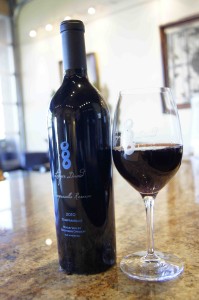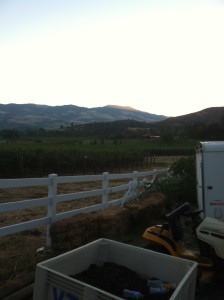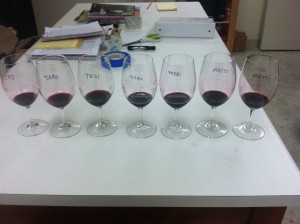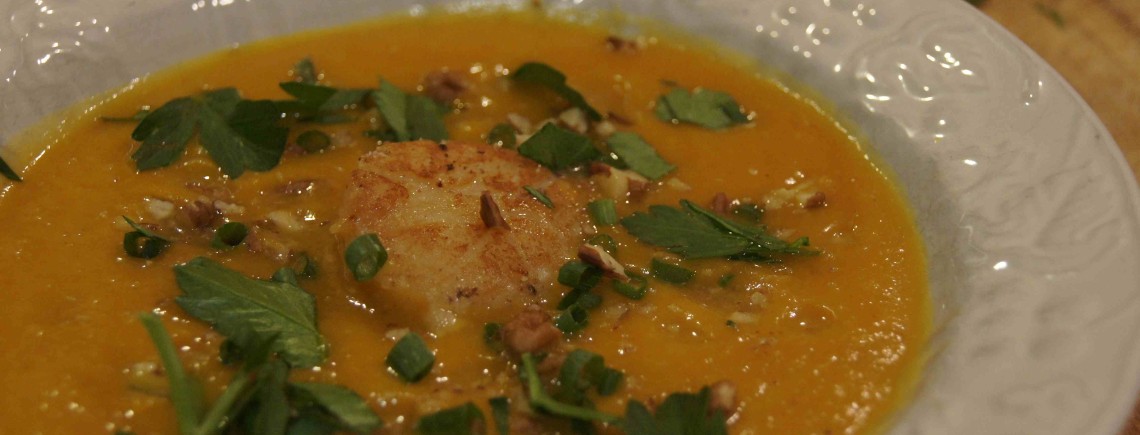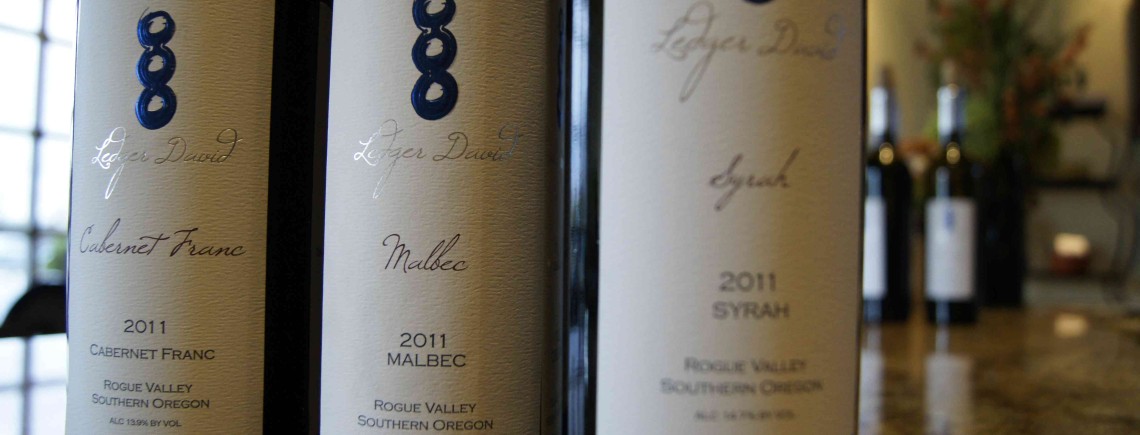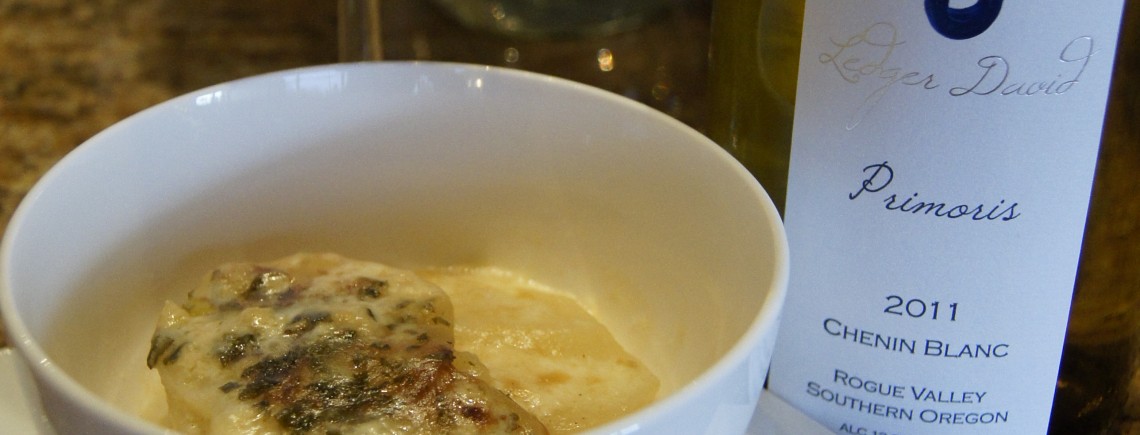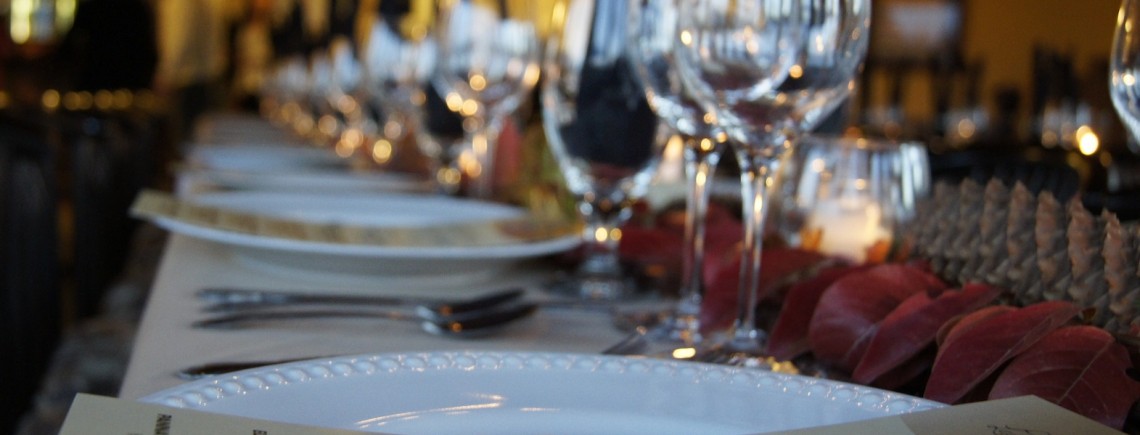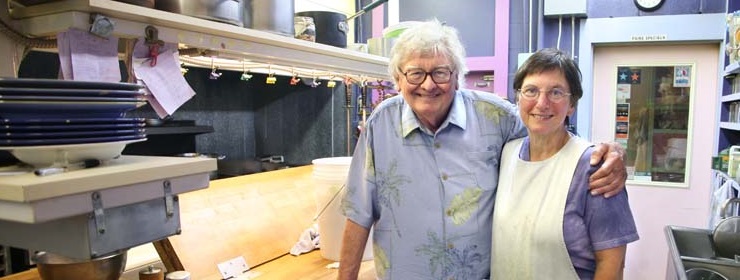Celebrate Tempranillo Day!
Date: 1929 Location: Barcelona, Spain. Event: 1929 World’s Fair Wine Competition. Moment: Spain’s Vega Sicilia is discovered by at-the-time a worldwide audience of wine lovers as its 1917 and 1918 vintages win multiple awards. Fast-forward to 1956 as Vega Sicilia initiates the formation and organization of Spain’s Ribera del Duero wine region as a Designated Region of Origin, similar to our own AVAs. Next, in 1986 and in a world far more connected and wine savvy than in 1956, a wine review was published that would prophet change in the wine world. Robert Parker’s Wine Advocate rated the 1982 Pesquera very highly and the fruits of Winemaker Alejandro Fernandez’ labor ignited fires the world over as growers, producers, and consumers suddenly “discovered” the Tempranillo-based red wines of the Ribera del Duero once again. While long the backbone for the great and profound wines from Spain’s Ribera del Duero and Rioja it wouldn’t take long for Tempranillo to become the world’s 6th most widely planted grape.
There is considerably more Tempranillo in the US than one would think, but it has mostly been relegated to plantings in California’s Central Valley and used in the production of generic, bland, non-varietal wines of little distinction. However, in the mid-90s several individuals in the US who realized the potential of Tempranillo began trying to elevate the status of this noble grape. A precious few plantings found their way to premium sites and soils in California’s Sonoma and Napa counties and Sierra Foothills, as well as Oregon’s Umpqua Valley.
In 2002 a group of Tempranillo producers met at an invitation-only varietal tasting hosted by journalists Ray and Eleanor Heald. People met, wines were tasted, and discussion ensued as the seed for an organization dedicated to promoting Tempranillo grapes and wine grown and produced in the US was planted that day. Next, in January 2004 those people got together again, along with a few other pioneers, and formed the base of the group that would promote the Tempranillo banner, TAPAS, or Tempranillo Advocates, Producers, and Amigos Society. From that initial meeting of fewer than a dozen people TAPAS has grown into an organization with nearly 70 winery members. TAPAS biggest annual event comes in the form of International Tempranillo Day the second Thursday in November each year.
Jump forward to today. We already knew the Ledger David estate vineyard was perfectly suited to producing luxurious Tempranillo fruit when our vines went in the ground in 2008. In 2010 we had planned to remove the fruit from those young vines, but we were persuaded to leave it on the vine and that gorgeous wine could be made from that young fruit. The results speak for themselves. Our 2010 Tempranillo, 2010 Tempranillo Reserve, and 2010 Tempranillo Port have been some of our most popular, as well as awarded, wines.
Come Celebrate International Tempranillo Day at Ledger David on Sat., Nov. 15 from noon-5pm. Enjoy small bites paired with our first vintage 2010 Tempranillo Reserve and our very limited Tempranillo Port along with a selection of other estate wines. For more information, visit www.ledgerdavid.com or call (541) 664-2218.
Winemaker Kiley Evans Sums Up 2014 Harvest in A Word: Exhilarating
By Winemaker Kiley Evans
Well here I sit, Macbook on lap, trying to find the words to express the vintage we are experiencing in 2014 at Ledger David Cellars. Yes, I know the hype in Oregon this year has been early, hot, bountiful, and great quality. I’ll go along with all but the first. You remember my recent post about how our vineyard is a cool spot in a warm area? The evidence is at hand. Let’s dive into our white harvest so far.
The Ledger David whites are all in the barn (I’m from the South, remember? Everyone has a barn in the South and that’s where crops go when harvested). Our first pick, Sauvignon blanc, or savvy as one of my dear Aussie compadres calls it, is fermented dry and aging. Crisp, clean, concentrated aromas and flavors.
Our second pick was Chardonnay. The Chard has completed its primary fermentation, as well. We kept our vineyard’s two clones separate this year and are again using roughly 20% new French oak and 30% ML fermentation. The wine right now is hard to read. It just finished the alcoholic fermentation and hasn’t fully integrated as of this morning. The component parts, intense tropical fruit, balanced acidity, toasty oak, caramel and butterscotch tones, are there, but they aren’t all playing the same page of music just yet. Patience required.
Chenin blanc came in next. We turned the Chenin into a grand experiment. We have a great combination of stainless steel drums and neutral oak barrels and we have multiple yeast strains at work including “native” yeast, which are the yeasts that come into the winery on the fruit. We will bottle several different tiny lots of this wine for future tasting to see which of these trial wines comes closest to expressing our vineyard site when compared to prior vintages.
I have to say the wines are beyond interesting with unctuous mouthfeels and textures unlike anything we have done in the past. Viognier was next. All I can “legally” share about our Viognier from 2014 is that it is simply astonishing, a first for Ledger David, and an exceedingly rare style of wine. Trust me when I say it will blow the status quo out of the water. Lastly, we harvested our Malvasia bianca. Malvasia is a very late ripening variety and the wine has only just begun to ferment. We have a little something special planned for this, too.
Our first red in the barn was Syrah. As I tasted the three bins of fermenting black marbles this morning I was struck first by the intense inky color. Then the aromas took my nose for a ride. Blue and black berries, earth, game, road tar, pepper, all-spice, grilled bread, and an intriguing herbal note that reminded me of dried herbs de provence and garrigue. Tempranillo came next, or at least part of it. What we have fermenting right now astounds me with its depth of flavor, richness of texture, and structure considering its age. This earlier-ripening clone tasted in the vineyard like it had something special to show, which is becoming a bit more obvious now. Reserve, you ask? I can’t say for certain just yet, but am definitely leaning that way.
All of our Malbec came next. Wonder why my hands are stained? Wonder no more. Malbec inspired the “Society of the Black Hand”, of which I am a proud member every harvest. It stained the inside of the glass as I swirled and is staining my keyboard now. Intense black and red fruit, lavender, and freshly roasted coffee with an oily, thick, chewy, and extracted texture, mouth-filling body, and long, pure finish. All I could say was, “Wow.” We have harvested a portion of our Sangiovese and Cabernet franc, but those wines have not begun to ferment yet. Given the Syrah, Tempranillo, and Malbec thus far I am seeing this as one of those rare vintages in which Mother Nature blesses our vineyard with exceptional fruit and we do our best to coax from those grapes an expression of her goodness, vitality, and indomitable spirit. It won’t be long before we start thinking about pressing the reds off the skins, selecting and filling barrels, and shortly after that blending. The process comes on fast, but with wines like these it is such happy torture.
The last of the wines were picked the first week in November – Cabernet franc and Petit verdot.
Stay tuned…
Seared Scallops in Pumpkin Soup
Serve with Ledger David Cellars 2011 Radiant White (70% Chardonnay 30% Viognier)
Introductory Notes: This particular recipe for a delightful seasonal soup features pumpkin but lots of hearty fall vegetables can be used as the base. Also, scallops are just one possible seafood selection. Crab, lobster, rockfish, the choices are nearly endless.
I like crumbled smokey blue cheese from the Rogue Creamery for one but bacon crumbles, grated parmesan, any number of chopped nuts and a whole host of garnishes (chives, parsleys and other tasty greens) all work beautifully in this fall delight. I encourage you to experiment and have fun eating healthy and seasonally!
Ingredients:
1 stick Butter
1 Medium sized yellow onion- chopped
4 cloves garlic/ minced
2 lbs. Pumpkin: You can chop up your market pumpkin, grow your own or in the case of me putting this recipe together, use canned.
3 ounces honey
3 cups Chicken broth
1 cup Ledger David Radiant White wine
4 tablespoons olive oil
16 large scallops
8 ounces chopped nuts (I like pecans but walnuts, hazelnuts or your other favorites would be great)
Chopped chives and parsley
Heavy Whipping Cream
Cinnamon and Nutmeg
Directions:
Whip the cream ahead of time and set in the refrigerator until serving time.
In a large heavy bottomed sauce pan melt the butter over medium heat. Add the garlic, onion until lightly caramelized. Add the pumpkin, honey, chicken stock, white wine and simmer for 10-15 minutes.
Remove from heat and let cool for 10 minutes. Puree this in a blender or food processor. Return to the saucepan and reheat.
In a large skillet, heat the olive oil and pan sear the scallops until lightly golden brown on each side. Watch carefully and don’t overcook the scallops.
Fill each bowl with the pumpkin soup and place equal number of scallops in each bowl. Dollop the whipped cream and lightly dust with cinnamon and nutmeg. Garnish with the chives, parsley and nuts.
Serve immediately.
Taste Ledger David’s Best of the Best Wines of 2014
By Winemaker Kiley Evans
The 2014 award season was been very kind to Ledger David Cellars, but how does one recap a season in which we entered only a few wine competitions and had stars emerge in each one? There are literally hundreds of competitions held annually throughout the country. Some producers like to tout 25 medals for an individual wine. Our philosophy on competitions is somewhat different. We could enter 30 or more wine competitions per year, but we prefer to enter only a few highly competitive and invitation-only contests so that our medals carry a bit more weight. In our eight competitions in 2014 we earned 17 medals. There isn’t room to mention each one individually, and that limitation always draws some less-than-kind glares from the wines not mentioned, so be kind to those wines when you visit Le Petit Tasting Room, but we can cover the major highlights.
First up, our 2011 Cabernet franc. By no means are producers of Cabernet franc in the Pacific Northwest few in number. In reality, we’re one of probably several hundred PNW producers when you consider Washington, Idaho, British Columbia, and Oregon. When we got the invitation from SIP Northwest to be considered in a “Best of the Best” competition we were flattered. When we got the news we won we were ecstatic. Look. The Cab franc is beaming, too.
Second in line is the 2011 Syrah. Syrah is a great match for the Ledger David Cellars estate vineyard. During the growing season Syrah obviously enjoys our east-facing slopes as it develops and ripens. We really enjoy the wine it produces, as well. The judges for Portland Monthly’s annual “Oregon’s 50 Best Wines” agreed. We ranked #35 in their tasting. There are easily 1,000 wines produced in Oregon in any given year. This distinction is both huge and humbling.
Last, but certainly not least, our 2011 Malbec. This is the first Malbec for Ledger David Cellars. We have always held Malbec in high regard and our site has produced some pretty good Malbec fruit, but we had to be certain we measured up before we took the plunge to bottle a varietal Malbec. When the wine was shipped to the 2014 Los Angeles International Wine Competition we had no expectations. A few weeks later we got the news: Gold Medal, 93 points, and the second highest rated domestic Malbec. Yep, quite a year!
With all of these things in mind and the end of our harvest season approaching we thought a little tribute to these wines to finish off the year would be fun so we are planning a “Best of the Best” weekend for Sat., Nov. 22 and Sun., Nov. 23. A $10 tasting fee will apply and we’ll have our three award winners available in their remaining limited quantities paired with small bites from Déjà Vu Bistro & Wine Bar in Jacksonville. Think we should make this an annual event?
Ledger David Scalloped Potatoes with Ledger David Primoris Chenin Blanc
Ledger David Scalloped Potatoes with Ledger David Primoris Chenin Blanc
3 lbs russet potatoes
4 T. butter
1 shallot
2 cloves garlic, minced
1/8 cup Ledger David Primoris
1 cup shredded Greyure cheese
1 cup heavy cream
½ cup milk
1 tsp. hot sauce
Peel potatoes and drop into a bowl of cold water and preheat oven to 300 degrees. Combine the cream, milk and hot sauce into a measuring cup. Saute shallots and garlic in 1 tsp. butter and cut the remaining butter into small cubes. When the shallots and garlic are soft, add the Ledger David Primoris and cook for 5 minutes, then set aside. When cool, add to the cream/milk mixture.
Butter a shallow 10” baking dish. Slice potatoes into 1/8” rounds and place in the dish to cover the bottom. When you have a layer of potatoes, sprinkle with 1 tsp of salt, ½ tsp pepper, 1/3 of the Greyure cheese, and 1/3 of the butter cubes. Begin a second layer, following the same procedure. For the third and final layer, top with the cheese, sprinkle with salt and pour the cream/milk mixture over the potatoes.
Bake potatoes for 1 ½ to 2 hours, uncovered, until you can insert a knife into the potato slices with no resistance.
Serve and enjoy!
Sangiovese Mulled Wine Recipe with Ledger David Sangiovese
Sangiovese Mulled Wine Recipe with Ledger David Sangiovese
1 bottle (750ml) Ledger David Sangiovese
1 whole cinnamon stick
1 tsp. whole allspice
1 whole nutmeg
¼-1/2 c. sugar (add to taste)
Zest ½ small orange
Harvest Winemaker Dinner November 11 at Liquid Assets Wine Bar
Join Winemaker Kiley Evans of Ledger David Cellars for a special harvest dinner at Liquid Assets Wine Bar in Ashland on Tuesday, November 11 at 6:30pm. The event features seasonal gourmet menu items paired with a selection of Ledger David wines including the latest release of our signature Primoris Chenin Blanc and our exclusive 2010 Tempranillo Reserve.
MENU
First Course
Vanilla butter poached halibut cheeks, preserved lemon and chive crème fraîche
dressing, live bibb lettuce and Brioche croutons
Paired with 2013 Primoris Chenin Blanc
Second Course
Vin Santo glazed duck leg, farro and roasted squash risotto, braised rapini with
amarena cherry jus
Paired with 2011 Sangiovese
Third Course
Moroccan spiced teres major steak, fingerling potatoes, eggplant and piquillo pepper
pisto with valdeon espuma
Paired with 2010 Tempranillo Reserve
Fourth Course
Chèvre Cheesecake, pear and honey compote
Paired with 2012 Encore Chenin Blanc
Local menu items subject to change
No substitutions please
$70 per person (plus tax & 18 percent gratuity). Reservations Required. Limited Seating.
For more info or to make a reservation, call (541) 482-9463 or email [email protected].
New Sammy’s Cowboy Bistro in Talent Features Ledger David Wines
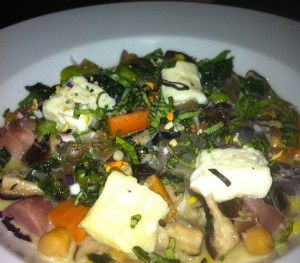 New Sammy’s Cowboy Bistro located in Talent, Oregon is said to have transformed America’s dining. This roadside restaurant between Ashland and Talent uses organic ingredients, many of which come from the garden beside the restaurant and offer a seasonally exclusive menu.
New Sammy’s Cowboy Bistro located in Talent, Oregon is said to have transformed America’s dining. This roadside restaurant between Ashland and Talent uses organic ingredients, many of which come from the garden beside the restaurant and offer a seasonally exclusive menu.
Owner Charlene Rollins heads the tiny kitchen, turning out refined organic dishes, while her husband, Vernon, handles the astounding 3,000-plus-bottle wine list which includes Ledger David’s Sangiovese Rosé. Make a reservation today for an affordable and unique experience.
“Our Gnocchi is my go to pairing for Ledger David Sangiovese Rose,” says Vernon, owner of New Sammy’s.
Open Wednesday – Saturday: 12:00 – 1:30pm, 5:00 – 9:00pm.
2210 S Pacific Highway
Talent, OR 97540
541-535-2779
The Rogue Valley AVA: A Cool Spot in a Warm Climate
By Kiley Evans, Winemaker
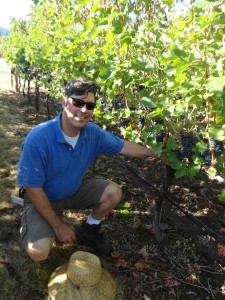 Winemakers read. Some of us read fiction, some read biographies, but invariably we all read about wine in some way at some time. People, really smart people, all over the world write on Grape Growing, Wine Production, Wine Branding, Wine Marketing, Wine Sales, Wine Inventory, Wine and Climatology, Wine and Geology, Wine and Soil Science, you get the idea. I read about wine and the wine industry more that I probably should, but it’s almost an escape for me at times. A few months ago I was reading about the Aesthetics of Wine and ran across a great line that provoked me. “Many of the world’s most profound places for growing wine can be filtered down to two ideals, a warm spot in a cool climate or a cool spot in a warm climate.” Remember, in the Northern Hemisphere the south- to west-facing slopes are hottest while north- to east-facing slopes are cooler than flat land (in the Southern Hemisphere the north-facing slopes are warmest).
Winemakers read. Some of us read fiction, some read biographies, but invariably we all read about wine in some way at some time. People, really smart people, all over the world write on Grape Growing, Wine Production, Wine Branding, Wine Marketing, Wine Sales, Wine Inventory, Wine and Climatology, Wine and Geology, Wine and Soil Science, you get the idea. I read about wine and the wine industry more that I probably should, but it’s almost an escape for me at times. A few months ago I was reading about the Aesthetics of Wine and ran across a great line that provoked me. “Many of the world’s most profound places for growing wine can be filtered down to two ideals, a warm spot in a cool climate or a cool spot in a warm climate.” Remember, in the Northern Hemisphere the south- to west-facing slopes are hottest while north- to east-facing slopes are cooler than flat land (in the Southern Hemisphere the north-facing slopes are warmest).
I started thinking. Where are the world’s great places for wine? For argument’s sake let’s take a look at Germany. Riesling is the grape, of course, but where in Germany exactly? Germany has the world’s most northerly vineyards, but take a close look at a map of Germany’s greatest vineyards, its Grand Crus. Practically all of them lie along a river, the Rhine and Mosel, on steep, south-facing slopes with slate soils. Why? What makes those places so special? The answer lies in a unique combination of factors. The rivers moderate the temperature. The slopes intercept more sunlight and thus heat that the surrounding flat lands. The slate soils warm rapidly and then radiate that heat back into the vines as the temperature falls after the sun goes down. In other words, it’s a warm spot in a cool climate. Check out the Doctor vineyard above the town of Bernkastel along the Mosel River.
Now take a look at our own Rogue Valley. We have what most would consider a moderately warm area. In such areas the cooler spots tend to be at higher elevations, shaded, such as at the base of a cliff, and/or oriented away from intense direct sunlight.
So here we are at a time of year that would normally be the middle of harvest, but this has been one of the hottest years on record for the Rogue. As a result, nearly all of the valley’s wine grapes have been harvested. But not at Ledger David Cellars. What? Everyone else has picked but us? What are we doing wrong? What is happening? Well…our estate vineyard ranges from 1,844 to over 1,975 feet elevation and enjoys eastern and northeastern exposures. The result? We are quite a bit cooler than most other vineyards and that results in a much slower, more even ripening of the fruit. Our site also allows us to achieve maximum “hang time”, a term in grape growing and winemaking that describes the seasonally late time frame in which the grapes ripen enzymatically without increasing in sugar content. Essentially the grapes develop aromatic complexity while the flavor compounds intensify. Late season ripening doesn’t happen very easily, if at all, if the grapes are exposed to the direct sun. They tend to raisin and take on a cooked fruit quality that isn’t necessarily desirable in wine. But on our elevated slopes the vines are gently warmed by the morning sun and caressed by afternoon shade. In other words, it’s a cool spot in a warm climate, and that is one of the things that makes it so special.
Roasted Leg of Lamb with 2011 Dark Night Red Blend
By Guest Blogger & Wine Club Member Sean Preston
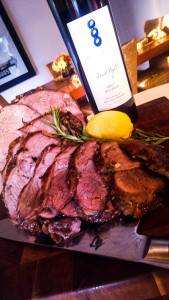
The calendar has indicated the last day of summer has come and gone. The hot temperatures and dry conditions should now wane to cool evenings, foggy mornings, and yards full of morning dew. To the eye, the changing season is in full effect, with the slow turn of fall colors in the trees. However, the temperature, the fog, and morning dew have not gotten the message it seems here in Southern Oregon, as we are still in the throes of 90-degree days, with the lingering smoke from summer forest fires in the air.
As a person who loves fall, and all the majesty the season brings, something had to be done. I could not sit idly by with the air conditioning running, simply surviving a fall day disguised as a day in August. It was time to perform a rain dance…a culinary rain dance.
I was armed with the hearty, earthy flavors of lamb, white beans, and vanilla. Along with an arsenal of some of the best wines the Rogue Valley has to offer, I was now prepared for this season changing ritual.
The dance would be done in three parts:
The first part would begin with a boneless leg of lamb, rubbed inside and out with lemon, garlic, shallot, and rosemary and destined for a slow and low roasting in the oven. Then it was finished off with a sauce made with drippings from the lamb and the 2011 Dark Night red blend from Ledger David.
The second part would have white beans, joining some 2011 Ledger David Sauvignon Blanc, a mirepoix, chicken broth, and herbs to simmer and cook into a creamy side dish with all the flavors of fall.
The final part of this rain dance is dessert. Whole vanilla bean is split and seeded, and joined with custard to be transformed into gelato. A whole bottle of 2010 Tempranillo Port from Ledger David is emptied and reduced over low heat to create a syrup flavor bomb of mass destruction, which is drizzled over the vanilla gelato.
The end result is a house full of amazing fall aromas, and a meal that would convince the ever-fickle Mother Nature that fall is indeed here, and to herald in this glorious season.
Did it work? Well, the weather forecast is for rain and cooler temperatures so, you be the judge.
Roasted Leg of Lamb
Ingredients:
2 Tbsp. of extra-virgin olive oil
3 medium garlic cloves, minced
2 medium shallots, minced
2 Tbsp. fresh rosemary chopped
Zest of one lemon
½ tsp of red pepper flakes
2 Tbsp. of kosher salt
½ tsp of freshly ground black pepper
3-4 large carrots
1 whole boneless leg of lamb 3-5lbs.
Place oven rack on lower middle position, and preheat oven to 275 degrees. While oven is heating up, heat olive oil in a small saucepan over medium heat. Add garlic, shallot, rosemary, lemon zest, and red pepper flakes. Cook, stirring occasionally, until shallots and garlic are softened, about 5 minutes. Transfer to a small bowl, add salt and pepper and mix to combine.
Rub half of mixture into inside of butterflied lamb leg. Roll leg and tie securely with butcher’s twine. Rub remaining mixture over exterior of lamb. Cook immediately or let rest uncovered in the refrigerator for up to one night for best flavor and texture.
When ready to cook, place lamb on top of large carrots in the bottom of a heavy enameled cast iron French oven, or Dutch oven. Placing lamb on top of the carrots keeps meat from burning on the bottom, and keeps meet out of the rendering fat. Transfer to oven and roast until an instant read thermometer inserted into coolest section of lamb registers 125° to 130°F for medium-rare, or 130° to 135°F for medium, about 3 hours. Remove from oven and let rest for 40 minutes.
While lamb is resting, increase oven temperature to 500°F. Place lamb on a wire rack or directly on oven rack with a rimmed baking sheet underneath to catch any drippings. Return lamb to oven and roast until exterior is deep brown and crisp, about 15 minutes. Remove from oven and let rest 5 minutes. Remove twine with kitchen shears, transfer lamb to cutting board, slice into 1/4 inch slices, and serve, along with a glass of 2010 Dark Night.
Dark Night wine sauce
Ingredients:
1 cup of Dark Night
All drippings from cooked lamb
1-2 Tbsp. of unsalted butter
1 tsp of corn starch
Salt and Pepper to taste.
Gather all drippings from lamb and separate fat by using a fat separator or letting cool and spooning the fat off the top. Return drippings (minus fat) to small sauce pan and bring to a boil. Once boiling add Dark Night, reduce heat and simmer for 2 minutes to remove alcohol. Take corn starch and dissolve in a small amount of water or wine, and add to sauce stirring constantly. Once sauce has simmered, and has reached a thicker consistency but not too thick, add butter and salt pepper to taste. Pour over lamb slices.
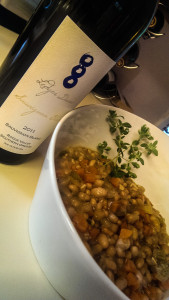 White Beans with Ledger David Sauvignon Blanc
White Beans with Ledger David Sauvignon Blanc
Ingredients:
½ cup Ledger David Sauvignon Blanc
2 Tbsp. extra-virgin olive oil
2 small onions, chopped fine
2 small carrots, chopped fine
2 celery ribs, chopped fine
3 garlic cloves, minced
2 cups cooked white beans (preferably Great Northern or navy)
2 to 2 1/2 cups chicken broth
2 Tbsp. unsalted butter
1 bay leaf
In a saucepan, heat oil over moderately high heat until hot but not smoking and cook onions, carrots, celery, and garlic, stirring, 2 or 3 minutes, or until softened. Add white and bring to a boil for 2 minutes, or until the wine is reduced by half. Add beans, 2 cups broth, butter, and bay leaf and cook over moderate heat, stirring occasionally and adding enough remaining broth to keep beans moist and to reach a creamy consistency, about 30 minutes. Discard bay leaf, salt and pepper to taste.
Ledger David Tempranillo Port sauce:
Ingredients:
1 bottle of 2010 Tempranillo Port
Homemade vanilla ice cream or Gelato or your favorite store bought French vanilla ice cream.
(I am skipping the Gelato recipe, as most people don’t have a gelato machine in their home…however, you can make equally good ice cream with a home ice cream maker.)
Pour entire bottle of port into a small sauce pan. Simmer port under low heat until reduced to roughly ¼ cup, stirring occasionally. This will take about an hour. Keep your eye on this, especially as you get close to the end, as you can burn the sauce, if it gets too hot. Serve warm, drizzled over ice cream, with a small glass of the port.
Enjoy!
Sean
Press & Trade
Recent News
Visit Us
Le Petit Tasting Room
Permanently Closed

